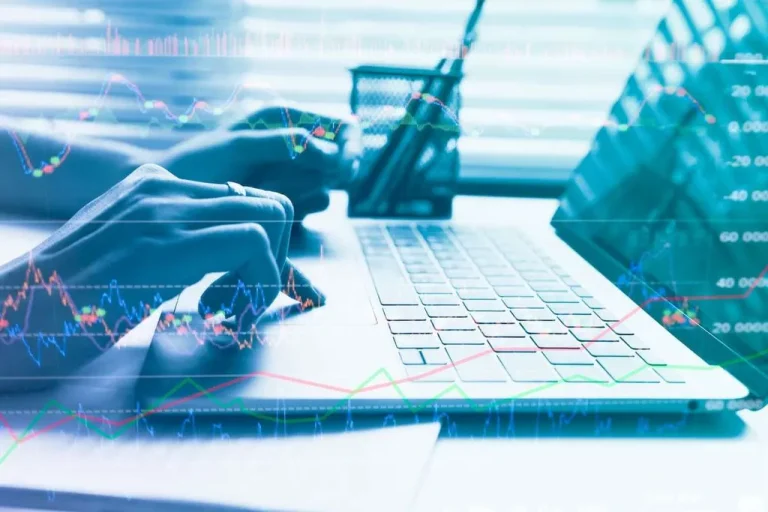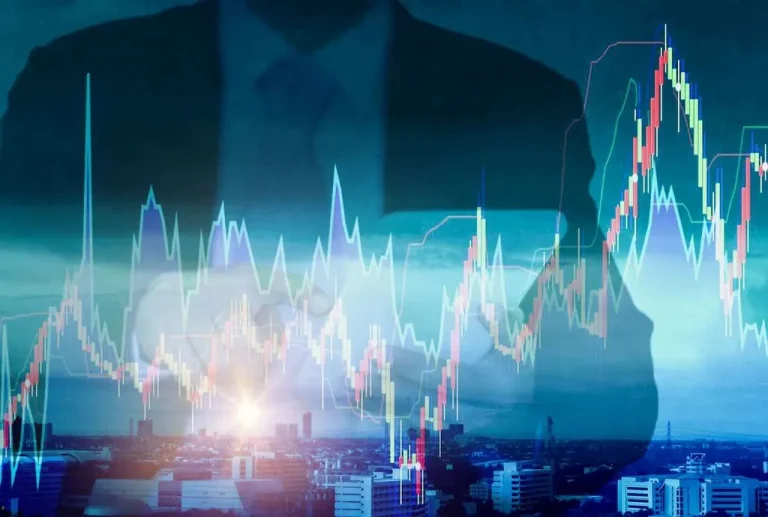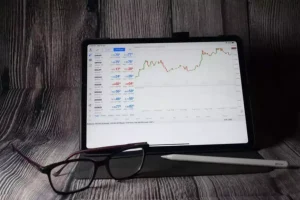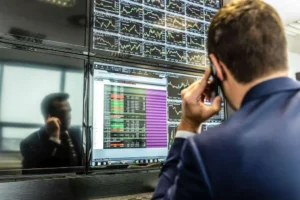We live in a constantly changing era when many fields face good and bad times, and Forex is among them. Volatility, the rate at which the cost of an asset rises or falls over a given interval, is one of the most interesting characteristics of the foreign exchange market. This blog post will tell you more about Forex volatility and how to perform operations in such conditions. Let’s discuss other fields you may deal in to reduce your losses.
Understanding Volatility in Forex
Volatility is the primary characteristic of financial instruments. It describes the rate of change in the cost of an asset during a selected period. If the worth of an asset varies constantly in the short term, it is considered highly volatile. With a minimal price deviation, we have an asset with low volatility. In Forex terms, volatility is the degree to which the worth of currency pairs changes over an interval that a trader utilizes to study foreign exchange markets.
There may be a sharp rise or fall in price; you can track all the jumps on the price chart. Exotic pairs show more significant instability and cross pairs take second place in this parameter. A Forex pair whose exchange rate fluctuates within 10-15 points is less erratic than a pair with fluctuations from 70 to 120 pips.


Turnkey Brokerage Solution For Your Business
Get the most profitable fully licensed fx/crypto brokerage software or ready-to-operate business in 48 hours. Best-in-class web & mobile trading platforms, sales-driven CRM, full integration with MT4/5, and 150+ payment providers.
How are Market Liquidity and Volatility Related?
To establish how Forex liquidity and FX volatility are related, it is worth analyzing the meaning of the term “liquidity.”
- Liquidity shows how quickly and smoothly you may purchase or sell assets in the field. Let’s say you want to purchase 150 ounces of platinum; then you need to find the asset owner willing to sell it.
- When we deal with highly liquid assets, this does not cause problems. Participants can quickly and without exchange hesitation execute a trade of EUR/USD worth 12 million during the London trading session. It is essential to choose the right time to perform such transactions since the liquidity of assets changes.
- If you execute an EUR/USD order after the close of trading on the American exchange and before the start of trading in Tokyo, you will notice that the currency has become less liquid. As a result, you may be disappointed with the contract terms.
- Experts explain that the more liquid an asset is, the less volatile it is since more effort is required to change its value significantly. Many large transactions are needed to change the market conditions of U.S. bonds or the cost of operations with the EUR/USD pair.
Simultaneously, it takes much less effort to adjust the exchange rate of the Indian rupee or the Brazilian real. It can be argued that these currencies are more erratic.
Why is Volatility Important in The Markets?
Uncertainty and volatility are integral elements of commercial activity. This helps us predict the potential change in worth that may occur in a currency pair.
The absence of Forex volatility means that the cost of assets does not change. And without adjustments in the worth of assets, any commercial activity becomes impossible.
Don’t forget a specific Forex volatility indicator is needed for the industry to perform successfully. However, difficulties arise when this level becomes too considerable.
If you plan to work in FX markets, you need to know which currencies are more volatile and in which cases the volatility index increases. So, the EUR/USD pair will become more erratic in anticipation of the Federal Reserve and European Central Bank announcing a change in interest rate policy.

What Causes Volatility in Forex?
Understanding currency volatility factors is key for participants to assess the risks and opportunities in the Forex area. Let’s consider the leading factors that cause fluctuations in price:
- Geopolitical risks. Geopolitical events cannot always be forecasted and cause sudden and severe instability. Increased uncertainty is often associated with elections, referendums, or military operations.
- Trade conflicts. When commercial barriers increase, exchange rates also face volatility. Markets are bracing for severe financial consequences and dealing with financial risks.
- Activities of monetary authority. Their monetary policy rules, interest rate adjustments, and statements about the economic outlook are closely monitored for clues about changes in the currency’s value in the foreseeable future.
Exchange rate movements are generally controlled by the participants who support them. Market participants ensure price changes through their transactions. Sector uncertainty may fluctuate depending on whether an optimistic or pessimistic mood prevails.
Forex Market Volatility Indicators
Market participants utilize various parameters when performing economic operations. When working with low-volatility assets, you can monitor support and resistance levels.
When dealing with high-volatility Forex pairs, you need to monitor prices as they can be volatile. Here are a few well-known indicators that you should utilize when interacting with them.
- Bollinger bands. This parameter allows you to determine whether the sector is overbought or oversold since the value may change in the other direction.
- Average True Range (ATR). This technical parameter is seen as a line below the market value chart. You may argue that uncertainty rises if you know the line is trending upward. However, as the chart moves downwards, instability decreases.
- Relative Strength Index. This parameter defines the scale of cost changes and demonstrates whether the assets were overbought or oversold to understand their position.
When working in the Forex market, it is essential to combine different indicators. They will allow you to formulate an effective foreign exchange portfolio strategy.
How to Mitigate the Risk of Volatility?
Dealing with the volatility of the Forex market requires a thoughtful tactic. Let’s look at a few actions that will help you successfully manage risks.
- Set and strictly adhere to stop loss and take profit. It will limit your losses and ensure capital flow.
- Implement technical indicators, including the Average True Range, to measure and predict market uncertainty. Such parameters allow investors to monitor volatility over a selected period and make rational decisions.
- Operate with various currencies to decrease the influence of one volatile sector. Trading different assets will help you build a diversified trading portfolio and become more independent of the shifts in the worth of one asset.
- Implement short-term commercial tactics. They work effectively with daily price fluctuations during periods of high volatility. Adopting short-term commercial algorithms, including scalping or day trading, to neutralize the effects of daily price fluctuations at times of maximum instability is key to successful risk monitoring.
Track the events in the economic calendar and world news to identify uncertainty risks in advance.
Market Alternatives to Volatility on Forex
The stock market has been significantly volatile lately. Therefore, experienced traders are increasingly choosing more stable fields and trading tools.
- The U.S. dollar. It is the global reserve currency and the currency of the world’s most significant economy. Although the U.S. inflation rate is high, the dollar is a safe haven for less stable notes today.
- Gold and silver. Users obtain access to precious metals through famous exchanges. Instead of trading gold or silver or making money via futures, you can interact with them as currency pairs in U.S. currency or through gold-linked pairs.
- Oil. Traders can carry out commercial transactions with oil to generate income through the exchange of physical products or speculation on their market value with Contracts for Differences (CFDs).
As we can see, to successfully overcome Forex volatility, you need to handle risks appropriately. It involves using the right parameters to determine volatility and adjusting commercial tactics. Your success in harnessing the industry’s potential depends on your risk tolerance. It is this significant volatility that makes Forex an exciting and dynamic environment.






